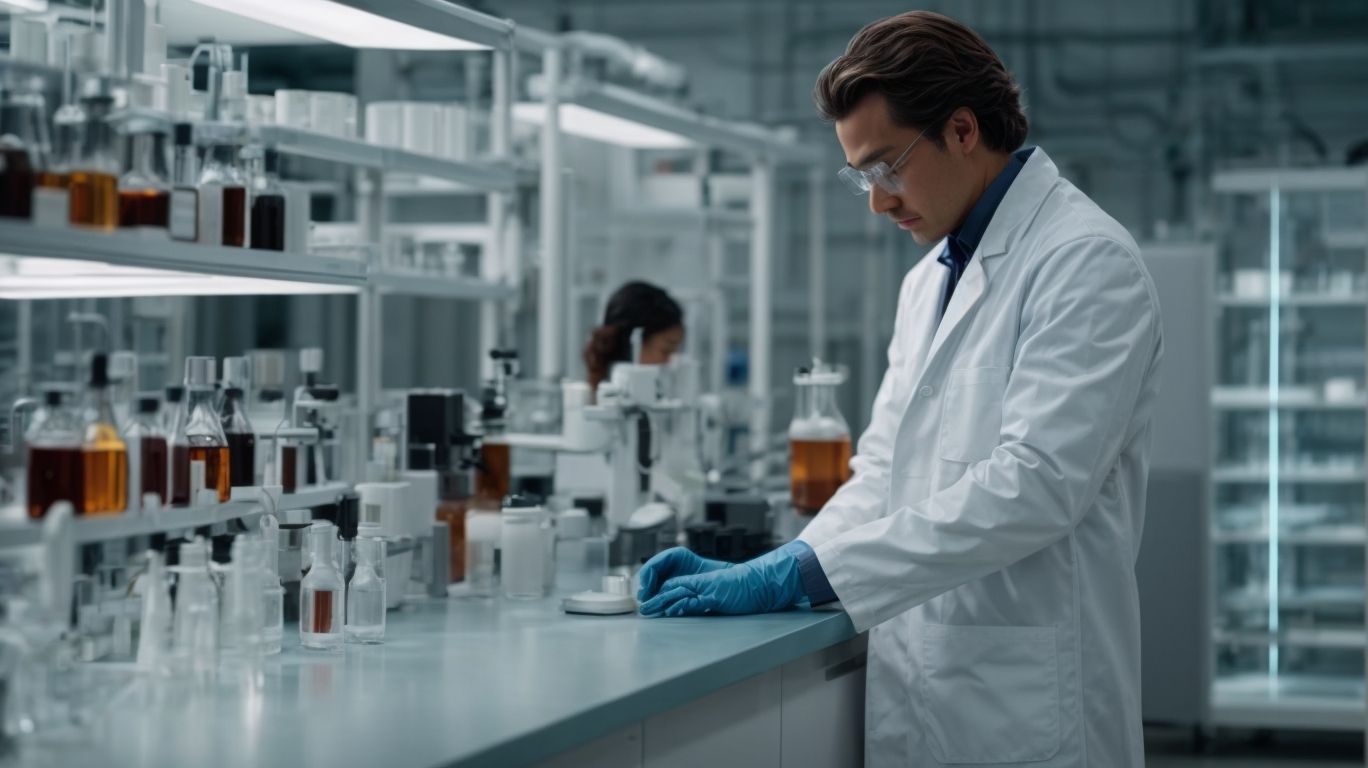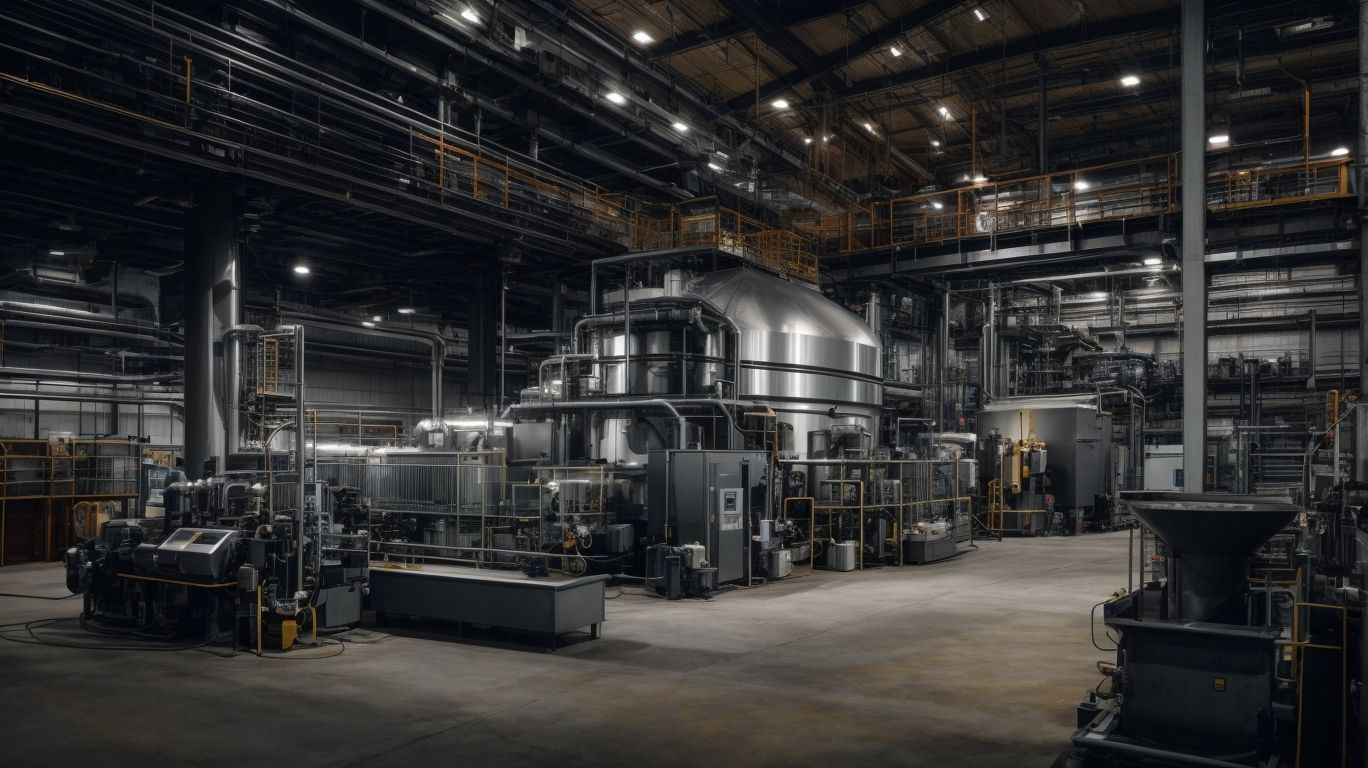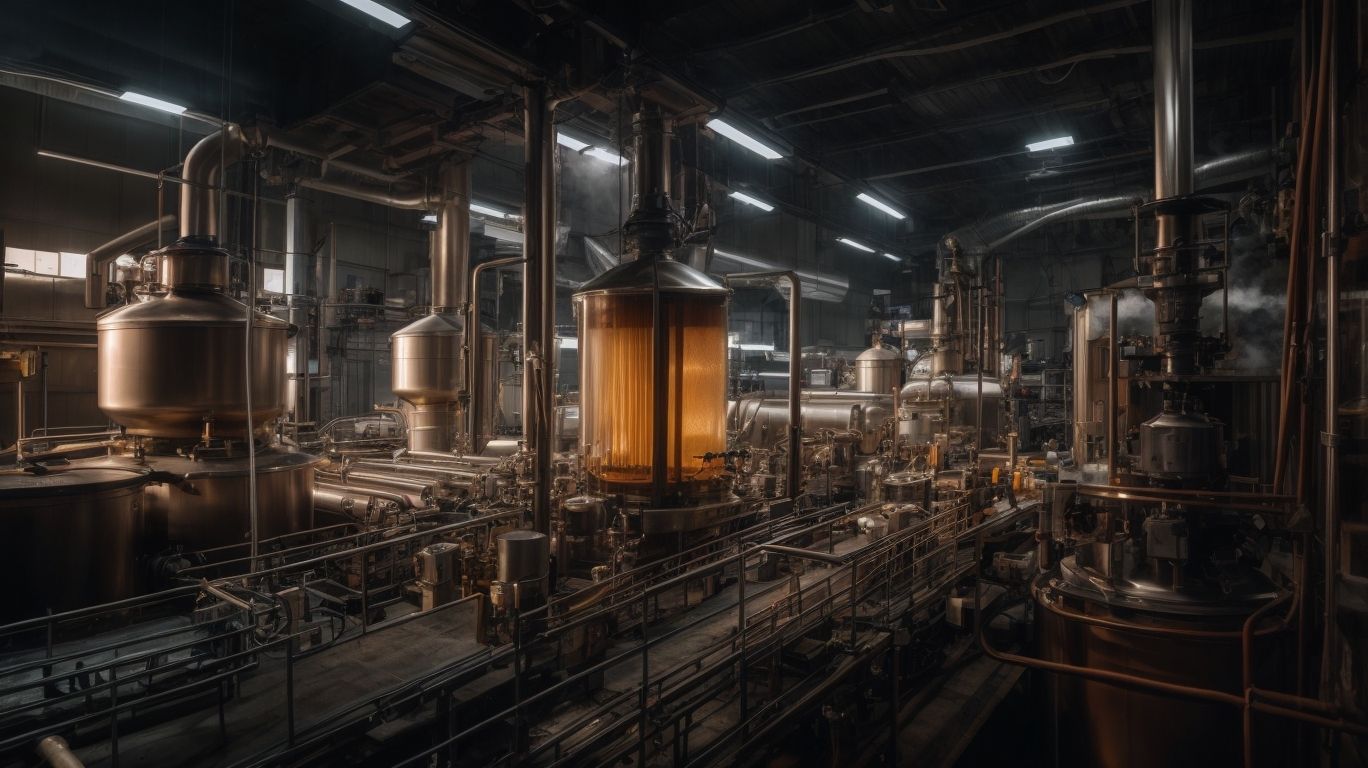Formaldehyde, also known as methanal, is a colorless, strong-smelling gas that is widely used in the production of various products and materials. It is a key ingredient in the manufacturing of resins, plastics, and textiles and is also used as a disinfectant and preservative. With an annual production of over 21 million tons worldwide, formaldehyde plays a crucial role in many industries.
The production of formaldehyde involves the oxidation of methanol, a process discovered by German chemist August Wilhelm von Hofmann in 1867. This process has evolved over the years, and modern methods utilize a silver-based catalyst to produce formaldehyde vapor, which is then condensed into a liquid form. The process also involves the use of various additives and stabilizers to ensure the quality and shelf-life of the final product.
Formaldehyde has a wide range of uses, including industrial applications, household products, and medical and laboratory uses. Here are some examples:
- Industrial Applications: Formaldehyde is a key ingredient in the production of resins, plastics, wood products, and textiles.
- Household Products: Many household products, such as adhesives, carpeting, and paper products, contain formaldehyde.
- Medical and Laboratory Uses: Formaldehyde is used in medical laboratories for tissue preservation and in various medical treatments.
Despite its many uses, formaldehyde is a toxic substance that can pose significant health risks. Prolonged exposure to formaldehyde can cause irritation of the eyes, nose, and throat, and may even lead to respiratory issues and cancer. Additionally, formaldehyde has a significant environmental impact as it is a volatile organic compound (VOC) that contributes to air pollution and can harm aquatic life.
To address these concerns, various alternatives to formaldehyde have been developed, including non-formaldehyde based products and formaldehyde-free production processes. These alternatives are becoming increasingly popular, especially in industries that prioritize sustainability and reducing their environmental impact.
Improvements in formaldehyde production can also be made through sustainable production methods and waste reduction and management. This includes implementing more efficient processes, using renewable energy sources, and properly managing and disposing of waste materials.
In conclusion, formaldehyde production is a complex process that has a significant impact on various industries. While it has many uses, it is essential to understand the safety concerns and explore more sustainable alternatives to ensure a safer and healthier production process.
Key Takeaways:
What Is Formaldehyde?

Photo Credits: Chemicalglossary.Net by Terry Davis
Formaldehyde is a colorless, strong-smelling gas that is commonly used in various industries, including manufacturing, healthcare, and construction. It is created through the oxidation of methanol, a process that involves the use of catalysts and high temperatures. Known for its preservative and disinfectant properties, formaldehyde is often utilized in embalming, preserving biological specimens, and producing items like plastics, textiles, and resins. However, prolonged exposure to this chemical can have harmful effects on human health, including respiratory issues and potential carcinogenic effects. Therefore, it is crucial to handle and use formaldehyde safely, following all necessary safety protocols and regulations.
How Is Formaldehyde Produced?

Photo Credits: Chemicalglossary.Net by Philip King
Formaldehyde is produced through a complex chemical process involving several steps:
- Oxidation of methanol: Methanol, also known as wood alcohol, is reacted with air or oxygen to produce formaldehyde.
- Catalytic reaction: The oxidation process is catalyzed by a metal oxide catalyst, typically silver or iron, which increases the rate of reaction.
- Condensation: The resulting formaldehyde gas is then cooled and condensed into a liquid form.
- Purification: The condensed liquid undergoes purification to remove impurities and unwanted by-products.
- Stabilization: Stabilizers are added to the purified formaldehyde to prevent further oxidation or degradation.
- Storage and distribution: The final product is stored in containers or transported for various industrial applications.
This process ensures the efficient and controlled production of formaldehyde for use in various industries such as manufacturing, healthcare, and construction.
What Are the Uses of Formaldehyde?

Photo Credits: Chemicalglossary.Net by Arthur Moore
Formaldehyde is a highly versatile chemical compound that is utilized in a wide range of applications across various industries. In this section, we will take a closer look at the diverse uses of formaldehyde. From industrial settings to household products to medical and laboratory applications, formaldehyde plays a crucial role in many processes. Let’s dive into the different ways in which this compound is used and how it contributes to our daily lives.
1. Industrial Applications
Formaldehyde has a wide range of industrial applications, making it a highly versatile chemical in various industries. Here are some common uses and steps involved in its industrial applications:
- Production of resins: Formaldehyde plays a key role in the production of resins, such as urea-formaldehyde and phenol-formaldehyde resins.
- Manufacturing of plastics: It is utilized in the manufacturing process of plastics, including polyurethanes and melamine.
- Textile industry: Formaldehyde is commonly used in the textile industry to create wrinkle-free and durable press finishes on fabrics.
- Paper industry: It is employed as a cross-linking agent in the paper industry to enhance paper strength.
- Preservation of biological samples: Formaldehyde is also utilized for the preservation of biological samples in laboratories and medical settings.
2. Household Products
Household products can contain formaldehyde, a chemical known for its preservative properties. To minimize exposure to this potentially harmful substance, follow these steps when selecting household products:
- Read labels carefully: Look for products labeled “formaldehyde-free” or “low formaldehyde.”
- Avoid pressed wood products: Furniture, cabinets, and flooring made from pressed wood can release formaldehyde. Opt for solid wood or products labeled “low formaldehyde emissions.”
- Choose natural cleaning products: Many conventional cleaning products contain formaldehyde-releasing chemicals. Opt for natural alternatives or make your own cleaners using non-toxic ingredients.
- Proper ventilation: Open windows or use exhaust fans to improve air circulation and reduce formaldehyde levels.
- Regular cleaning: Dust and clean your home regularly to remove formaldehyde particles that may settle on surfaces.
3. Medical and Laboratory Uses
Medical and laboratory uses of formaldehyde involve several steps in various applications.
- Tissue Preservation: Formaldehyde is commonly used as a fixative in histology to preserve tissues for examination under a microscope.
- Disinfectant: It is utilized as a disinfectant and sterilizing agent in medical and laboratory settings to prevent the spread of infectious diseases.
- Chemical Reagent: Formaldehyde is employed as a chemical reagent in various laboratory tests and experiments.
- Vaccine Production: It is used in the production of certain vaccines as a key component in inactivating viruses or bacteria.
- Biological Specimen Preparation: Formaldehyde is utilized for preserving biological specimens, such as animal or plant samples, for long-term storage and research purposes.
These applications demonstrate the importance and versatility of formaldehyde in medical and laboratory environments.
What Are the Safety Concerns of Formaldehyde?
One of the most widely used chemicals in various industries, formaldehyde has been a subject of concern due to its potential health and environmental impacts. In this section, we will delve into the safety concerns surrounding formaldehyde production. From the potential health risks of exposure to its environmental impact, we will also discuss the regulations and guidelines in place to ensure safe handling and usage of this chemical.
1. Health Risks of Exposure
Exposure to formaldehyde can pose significant health risks. To minimize these risks, follow these steps:
- Avoid direct contact with products or materials containing formaldehyde.
- Ensure proper ventilation in areas where formaldehyde is used or stored.
- Wear protective equipment, such as gloves and masks, when working with formaldehyde.
- Implement proper storage and disposal procedures for substances containing formaldehyde.
- Regularly monitor indoor environments for early detection of formaldehyde levels.
Pro-tip: Regularly airing out your living space can help reduce formaldehyde concentrations and improve indoor air quality.
2. Environmental Impact
Formaldehyde production has significant environmental impacts that should be considered:
- Air pollution: Formaldehyde emissions contribute to smog formation and can be harmful to human health.
- Water contamination: Improper disposal of formaldehyde waste can contaminate water sources, affecting aquatic life.
- Deforestation: Formaldehyde is commonly produced from methanol, which is derived from fossil fuels or wood. Unsustainable logging practices can result in deforestation.
To mitigate these impacts, alternatives to formaldehyde, such as non-formaldehyde-based products and formaldehyde-free production processes, should be explored. Implementing sustainable production methods and efficient waste reduction and management strategies can also minimize environmental harm.
Pro-tip: Choose eco-friendly products labeled as formaldehyde-free to reduce your environmental footprint.
3. Regulations and Guidelines
Regulations and guidelines are crucial for ensuring the safe handling and use of formaldehyde. Here are the steps to follow in order to comply with these regulations and guidelines:
- Check local regulations: Familiarize yourself with the specific regulations regarding formaldehyde use and handling in your area.
- Follow safety guidelines: Implement safety measures such as wearing protective equipment, using proper ventilation, and storing formaldehyde appropriately.
- Train employees: Educate workers on the safe handling, storage, and disposal of formaldehyde and provide regular training updates.
- Maintain records: Keep accurate records of formaldehyde usage, exposure, and safety measures to comply with reporting requirements.
- Monitor and test: Regularly monitor formaldehyde levels in the workplace to ensure compliance with exposure limits.
- Stay updated: Stay informed about any changes or updates to regulations and guidelines related to formaldehyde.
In 1987, the Occupational Safety and Health Administration (OSHA) issued regulations to protect workers from formaldehyde exposure. These regulations set permissible exposure limits and required employers to implement measures to protect employees. Since then, additional guidelines and standards have been developed by organizations like the Environmental Protection Agency (EPA) and the World Health Organization (WHO) to ensure the safe use of formaldehyde in various industries. Adhering to these regulations and guidelines is crucial to protecting both human health and the environment.
What Are the Alternatives to Formaldehyde?

Photo Credits: Chemicalglossary.Net by Michael Garcia
As the negative effects of formaldehyde become more widely recognized, the demand for alternative products and processes has increased. In this section, we will explore the various alternatives to formaldehyde in the production industry. First, we will discuss non-formaldehyde based products, which offer similar properties without the harmful effects. Then, we will delve into formaldehyde-free production processes and the innovative methods used to replace formaldehyde in various industries.
1. Non-Formaldehyde Based Products
Non-formaldehyde based products provide safer alternatives for various applications. Here are steps to consider when transitioning to non-formaldehyde based products:
- Identify the specific application where formaldehyde is currently used.
- Research and select non-formaldehyde based products that are suitable for the application.
- Evaluate the performance and effectiveness of the chosen non-formaldehyde based products.
- Train staff on proper usage and handling of the new products.
- Monitor and assess the results of using non-formaldehyde based products.
- Make any necessary adjustments or improvements to ensure optimal performance and safety.
By following these steps, industries and consumers can transition to safer alternatives that do not involve formaldehyde.
2. Formaldehyde-free Production Processes
Formaldehyde-free production processes offer alternative methods to reduce or eliminate the use of formaldehyde in various industries. Here are some steps involved in implementing these processes:
- Research and development: Invest in research to explore and develop formaldehyde-free alternatives for various applications.
- Material selection: Identify and use alternative materials that do not require the use of formaldehyde in production.
- Process modification: Adapt existing manufacturing processes or develop new ones that exclude formaldehyde as a component.
- Substitution: Replace formaldehyde-containing chemicals or agents with non-formaldehyde alternatives in the production process.
- Testing and validation: Conduct thorough testing and validation to ensure that the formaldehyde-free production process meets quality and safety standards.
- Education and training: Provide education and training to employees on the formaldehyde-free production process to ensure proper implementation and adherence.
- Monitoring and improvement: Continuously monitor the production process to identify areas for improvement and make adjustments accordingly.
How Can Formaldehyde Production Be Improved?

Photo Credits: Chemicalglossary.Net by Dylan Martinez
Formaldehyde production is a complex process that has a significant impact on the environment and human health. However, there are ways to improve this process to make it more sustainable and reduce waste. In this section, we will discuss two key areas for improvement: sustainable production methods and waste reduction and management. By exploring these sub-sections, we can gain a better understanding of the steps that can be taken to make formaldehyde production more environmentally friendly and socially responsible.
1. Sustainable Production Methods
Sustainable production methods are crucial for reducing the environmental impact of formaldehyde production. Here are some steps that can be taken:
- Implement energy-efficient technologies and processes to reduce energy consumption.
- Use renewable energy sources, such as solar or wind power, to power production facilities.
- Optimize raw material usage and minimize waste generation through recycling and reuse.
- Adopt green chemistry principles, including the use of catalysts and less hazardous reactants.
- Implement effective water management strategies to minimize water usage and wastewater generation.
In a similar vein, a formaldehyde production plant in Germany successfully reduced its environmental impact by implementing sustainable production methods. By adopting energy-efficient technologies and optimizing raw material usage, the plant managed to significantly reduce its carbon footprint and waste generation, while still maintaining high productivity levels.
2. Waste Reduction and Management
Waste reduction and management are essential steps in improving the production of formaldehyde. To achieve this, here are some effective strategies to minimize waste and ensure proper management:
- Implement recycling programs to reduce the amount of waste generated during production.
- Optimize production processes to minimize the generation of waste and byproducts.
- Invest in technologies that allow for the reuse or repurposing of waste materials.
- Properly handle and dispose of hazardous waste through safe and environmentally friendly methods.
- Regularly monitor and assess waste management practices to identify areas for improvement.
To further enhance waste reduction and management in formaldehyde production, companies can collaborate with research institutions and regulatory bodies to develop innovative solutions and implement best practices. By prioritizing waste reduction and management, the industry can minimize its environmental impact and contribute to a more sustainable future.
Frequently Asked Questions
What are the thermal curing characteristics of formaldehyde-based adhesives?
Formaldehyde-based adhesives have a unique thermal curing process due to the presence of bisbenzoxazines. The ratio of 4,4′-diaminodiphenyl sulfone and 4,4′-dihydroxy diphenyl sulfone can greatly affect the curing process, as well as the resulting thermoset’s thermal degradation. This is studied in Chapter 1 by researchers from Kamaraj College of Engineering and Technology in India.
How is formaldehyde detected and measured in the production of adhesives and resins?
Formaldehyde is a widely used chemical with potential health and environmental risks. In Chapter 2, researchers from Seoul National University in South Korea explore the surface chemistry of formaldehyde and its detection methods, crucial for ensuring safe and effective use of the chemical.
What is the role of electrochemical assessment in monitoring formaldehyde levels?
In Chapter 3, a team from King Abdulaziz University in Saudi Arabia discusses the use of doped nanorod materials for sensitive and accurate electrochemical assessment of formaldehyde. This method is important for environmental and health monitoring purposes.
How do styryl modified resorcinolic resin-formaldehyde donor adhesion systems contribute to the rubber industry?
Chapter 4 delves into the thermal studies of styryl modified resorcinolic resin-formaldehyde donor adhesion systems in the context of the rubber industry. This research, conducted by a team from Kamaraj College of Engineering and Technology in India, provides insights into the thermal properties and potential applications of these systems.
The book features contributions from researchers and experts from various institutions, including Sanjiv Sonkaria and Hyun-Joong Kim from Seoul National University in South Korea, Jamal Uddin and Abdullah M. Asiri from King Abdulaziz University in Saudi Arabia, and C.T. Vijayakumar, J. Dhanalakshmi, and S. Siva Kaylasa Sundari from Kamaraj College of Engineering and Technology in India.
Aside from the thermal curing and detection methods, this book also includes discussions on the use of formaldehyde in the rubber industry (Chapter 4), its electrochemical assessment (Chapter 3), and its thermal degradation (Chapter 1). The index in the table of contents provides a comprehensive overview of the topics covered in the book.
